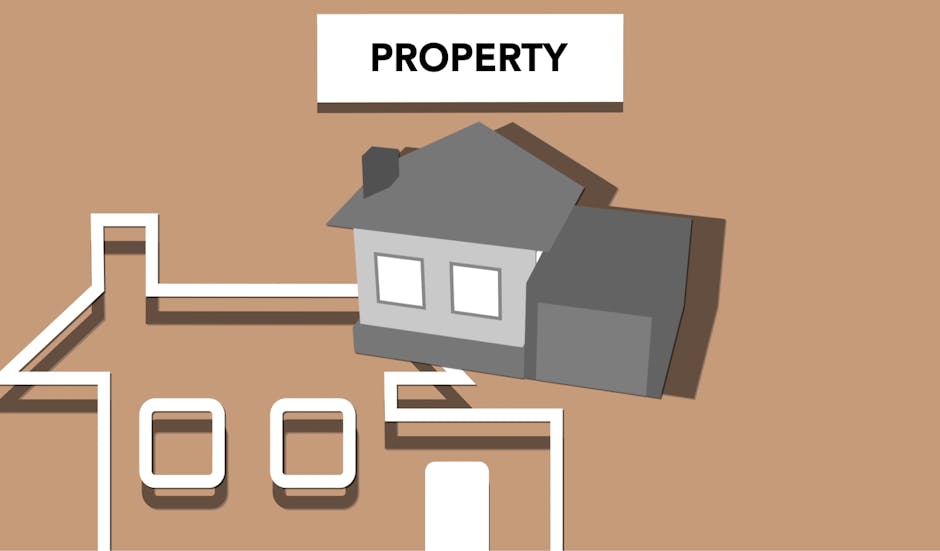Introduction to Home Automation
Home automation, often referred to as “smart home technology,” integrates various systems and devices in a home to allow for enhanced control, convenience, and efficiency. This technology encompasses a wide array of functions, from simple tasks such as lighting control to more complex processes like adjusting HVAC systems based on real-time conditions. By transforming traditional houses into smart homes, homeowners can enjoy numerous benefits, including increased security, energy efficiency, and overall comfort.
The primary allure of home automation lies in its ability to streamline everyday tasks and provide a seamless living experience. For example, automated systems can be set to perform routine actions, such as turning lights on and off according to a set schedule, adjusting the thermostat based on occupancy patterns, or monitoring home security systems from a remote location. These functionalities are not only convenient but also contribute to a more organized and efficient household.
One of the significant aspects of home automation is its interoperability. Devices and systems from various manufacturers can often communicate with each other through common protocols, such as Zigbee, Z-Wave, and Wi-Fi. This interoperability allows homeowners to create a cohesive network of devices tailored to their specific needs and preferences. Additionally, modern voice-activated assistants, such as Amazon’s Alexa, Google Assistant, and Apple’s Siri, have further simplified the user interface, making it easier than ever to control and manage smart home systems.
Energy management is another critical benefit of home automation. Smart thermostats, for instance, can learn a household’s schedule and preferences, optimizing heating and cooling to reduce energy consumption while maintaining comfort. Similarly, automated lighting systems can adjust brightness based on natural light availability and occupancy, further contributing to energy savings. According to the U.S. Department of Energy, smart technologies can potentially reduce overall household energy consumption by up to 30%, highlighting the significant impact of these systems.
Security enhancements provided by home automation cannot be overlooked. Smart security systems, which include features such as motion detectors, surveillance cameras, and smart locks, offer substantial improvements over traditional security setups. Homeowners can monitor and control these systems remotely, receive real-time alerts, and even integrate them with law enforcement services for added safety. The peace of mind obtained through these advanced security measures is invaluable and an attractive selling point for prospective buyers.
The convenience and appeal of home automation extend to prospective homeowners as well. In a competitive real estate market, properties equipped with smart home technologies often stand out. According to a study by Coldwell Banker, homes with smart technology sell faster and for higher prices compared to those without. This appeal is attributed to the modern lifestyle features and efficiencies that these technologies provide, making them an attractive investment for both current homeowners and potential buyers.
Understanding Property Value
Property value is a multifaceted concept influenced by numerous factors ranging from location to economic conditions. Understanding these factors is essential in recognizing how improvements, such as home automation, can enhance a property’s worth.
2.1 Fundamental Factors Influencing Property Value
Several core elements determine property value, with the most prominent being location, size, age, and market conditions. Each of these factors plays a significant role in how much a property can be sold for in the real estate market.
- Location: Properties situated in desirable neighborhoods with proximity to amenities such as schools, parks, and shopping centers generally command higher prices.
- Size: Larger properties with more bedrooms, bathrooms, and extensive land tend to be valued higher.
- Age and Condition: Newer properties or recently renovated homes often attract higher offers compared to older, less maintained counterparts.
- Market Conditions: Economic stability, interest rates, and housing demand can fluctuate, influencing overall property values.
2.2 Additional Value-Enhancing Features
Beyond the fundamental factors, certain features can significantly increase a property’s value. These include modern appliances, energy-efficient systems, and advanced security measures. Home automation falls under this category as it offers numerous advantages that appeal to prospective buyers.
According to the National Association of Realtors (NAR), home features such as smart thermostats, security systems, and lighting controls can make a property more attractive and competitive in the market. Buyers are often willing to pay a premium for homes equipped with the latest technology that promises convenience, energy efficiency, and enhanced security.
2.3 The Role of Home Automation
Home automation covers a broad spectrum of systems that can be integrated into modern homes. These include smart lighting, thermostats, security cameras, and voice-controlled assistants. When functioning compatibly, these systems create a cohesive smart home environment that can significantly elevate a property’s appeal and market value.
The integration of home automation systems doesn’t just add value in terms of sales price. It also makes properties more attractive to tech-savvy buyers, who are increasingly expecting such features to be standard. The result is often a faster sale process and potentially higher offer prices.
In summary, understanding property value involves recognizing the essential, and additional factors that can enhance it. Home automation stands out as a feature with a considerable impact, making properties more desirable and competitively priced in the real estate market.
Key Home Automation Technologies
Home automation technologies encompass a wide range of systems that enhance the convenience, security, and efficiency of a residence. These technologies are often categorized based on their primary functions, such as security, energy management, and home entertainment.
Smart Security Systems
Smart security systems are among the most popular home automation technologies. These systems typically include features such as motion sensors, security cameras, smart locks, and mobile alerts. According to the Parks Associates, smart doorbell adoption reached 14% in U.S. broadband households in 2021. Key benefits include real-time alerts and remote monitoring capabilities, which enhance the overall security of the property.
Energy Management Systems
Energy management systems are designed to optimize energy usage, leading to cost savings and environmental benefits. Smart thermostats, like those produced by Nest and Ecobee, can learn user preferences and adjust heating and cooling accordingly. The U.S. Environmental Protection Agency estimates that homeowners can save about 10% on heating and cooling costs by using a smart thermostat. Additionally, smart lighting systems, such as those from Philips Hue, allow users to control lighting remotely and create customized lighting schedules.
Home Entertainment Systems
Home entertainment innovations include smart TVs, multiroom audio systems, and voice-controlled assistants. These systems not only provide convenience but also enhance the home experience. Voice assistants like Amazon Alexa and Google Assistant can control various devices and provide hands-free operation of integrated systems. Market research firm Statista reports that the smart speaker market in the United States is projected to grow from 39.5 million units in 2018 to 76.7 million units by 2024.
Smart Kitchen Appliances
Smart kitchen appliances such as refrigerators, ovens, and dishwashers offer advanced features like remote monitoring, energy efficiency, and improved functionality. These appliances often come with connectivity to Wi-Fi and mobile apps, allowing users to manage kitchen tasks more effectively. Industry analysts from Allied Market Research forecast that the global smart kitchen appliances market will reach $43.8 billion by 2027, growing at a compound annual growth rate (CAGR) of 18.4% from 2020 to 2027.
Connectivity and Integration
One of the prevailing trends in home automation is the integration of various systems for seamless operation. Platforms like Apple HomeKit, Samsung SmartThings, and IFTTT enable different devices to communicate and work together, providing a unified user experience. This level of integration can significantly enhance the practicality and attractiveness of a smart home, contributing positively to its market value.
Collectively, these key home automation technologies serve to not only improve daily living but also augment the intrinsic and perceived value of a property, making it more attractive to potential buyers.
Impact of Home Automation on Property Value
Home automation has a multifaceted impact on property value, contributing both directly and indirectly to a home’s marketability and ultimate selling price. The influence of home automation on property value is supported by multiple data sources that highlight increased buyer interest, enhanced energy efficiency, and improved overall home functionality.
A study conducted by Coldwell Banker Real Estate revealed that 54% of homebuyers are willing to pay more for a home with smart technology features. This sentiment is echoed by other surveys, demonstrating that homes with advanced automation systems are perceived as more desirable in the market.
One of the key drivers behind this added value is the increased energy efficiency provided by home automation systems. Smart thermostats, lighting systems, and energy monitoring devices help homeowners reduce energy consumption and costs. According to the American Council for an Energy-Efficient Economy (ACEEE), homes equipped with smart thermostats can achieve energy savings of up to 10-15% on heating and cooling annually.
In addition to energy efficiency, home automation enhances security, which is a significant factor for many prospective buyers. The National Association of Realtors reports that security systems, including smart locks, cameras, and alarm systems, are highly valued, providing peace of mind and increasing the perceived value of the property.
- Increased Energy Efficiency: Smart thermostats can save up to 15% on heating and cooling costs.
- Enhanced Security: Smart locks and security systems offer added protection.
- Improved Marketability: 54% of buyers are willing to pay more for smart homes.
To further understand the impact of various home automation technologies on property value, consider the following table:
| Home Automation Feature | Potential Increase in Property Value |
|---|---|
| Smart Thermostats | Up to 5% |
| Security Systems | 3–5% |
| Smart Lighting | 1-3% |
The data indicates that integrating home automation technologies can lead to a substantial increase in property value. For homeowners looking to sell, these enhancements can make their properties more attractive, competitive, and ultimately more valuable in the real estate market.
Cost-Benefit Analysis of Home Automation
When considering home automation systems, it is essential to perform a cost-benefit analysis to understand the financial implications. The initial investment, potential savings, and overall impact on property value must be carefully evaluated.
Initial Investment
The initial cost of home automation systems can vary widely depending on the extent and complexity of the installations. A basic system with smart lighting, thermostats, and security features might cost between $1,000 and $3,000. However, a more comprehensive system that includes home theater solutions, advanced security, and integrated home control could range from $10,000 to $25,000 or more.
Energy Efficiency and Savings
One of the primary financial benefits of home automation is increased energy efficiency. Smart thermostats, such as the Nest Learning Thermostat, can save homeowners an average of 10%-12% on heating and 15% on cooling costs, as reported by various studies. This results in an average annual savings of $131 to $145, which can quickly offset the initial investment.
Insurance Discounts
Many insurance companies offer discounts on home insurance premiums for homes equipped with certain automation features. Systems that include smart security devices, such as alarms, cameras, and water leak sensors, can result in premium reductions of up to 20%. It is advisable to check with your insurance provider to see which devices qualify for discounts.
Maintenance Costs
While home automation systems can reduce operational costs, they may also incur maintenance costs. Regular updates, potential repairs, and occasional replacements are necessary to keep the system functioning optimally. These costs should be factored into the long-term financial planning for home automation.
Enhanced Property Value
The presence of a home automation system can significantly enhance property value. According to a survey by Coldwell Banker, homes with smart home features are preferred by 57% of buyers and can sell faster than non-smart homes. While it is difficult to quantify the exact increase in property value, a well-integrated home automation system can be a strong selling point, potentially increasing the home’s marketability and final sale price.
Conclusion
A cost-benefit analysis of home automation reveals that while there are notable initial costs, the potential savings, enhanced security, insurance discounts, and increased property value can make it a worthwhile investment. Homeowners should carefully consider their individual needs, budget, and the specific benefits offered by different automation technologies to make an informed decision.
Market Trends and Future Projections
The integration of home automation technology into residential properties has been a significant trend in recent years. According to a report by Statista, the smart home market is expected to reach up to $141 billion by 2023, demonstrating rapid growth and widespread acceptance among homeowners and real estate investors.
Several factors are driving this trend. Firstly, the increased availability and affordability of smart home devices have made home automation more accessible. With companies like Amazon, Google, and Apple entering the market, consumers can now choose from a wide range of products that fit various budgets.
In addition, energy efficiency is a major consideration for many homeowners. Products such as smart thermostats, which are capable of learning user preferences and adjusting heating and cooling systems accordingly, have become popular. Nest, a leading provider of smart thermostats, reports that its users save an average of 10-12% on heating costs and 15% on cooling costs annually. This not only reduces utility bills but also makes homes more attractive to potential buyers who are conscious of long-term operational costs.
Another important trend is the increasing emphasis on security. Smart home devices such as video doorbells, surveillance cameras, and smart locks enhance the security of a property, which is a priority for many prospective buyers. A study by the National Association of Realtors (NAR) indicated that 37% of agents said that smart home security technology could influence a buyer’s decision.
Voice-controlled home automation systems are also gaining popularity. According to a 2022 survey by Voicebot.ai, around 45% of internet users in the United States use voice assistants. This growing adoption indicates a shift towards more integrated and intuitive home management systems.
Looking forward, advancements in artificial intelligence (AI) and the Internet of Things (IoT) are expected to further enhance the capabilities of home automation systems. For example, AI-driven predictive maintenance can notify homeowners of potential issues before they become significant problems, thus preserving the property’s value over time.
Moreover, as 5G technology becomes more widespread, it is anticipated to improve the reliability and responsiveness of smart home devices, making them even more appealing. According to a report by Qualcomm, 5G’s role in advancing IoT is anticipated to create a more connected and efficient smart home ecosystem.
In conclusion, current market trends indicate a robust growth trajectory for home automation technologies. The continual advancements and increasing consumer demand suggest that smart home devices will remain a significant factor in determining property values in the future.
Conclusion and Recommendations
In conclusion, home automation is not just a trend but a significant factor that can enhance the value of your property. By integrating smart technologies, homeowners can enjoy increased convenience, security, and energy efficiency—all crucial elements that potential buyers look for when assessing a property’s worth.
The market for home automation is continuously expanding, driven by advancements in technology and increasing consumer demand for connected living. As a result, incorporating home automation features such as smart thermostats, security systems, and advanced lighting can make your property more appealing to a broader audience, potentially leading to quicker sales and higher offers.
It is essential to stay updated with the latest trends and choose systems that are both user-friendly and compatible with other devices. Investing in reputable brands and professional installation can further ensure that the home automation system functions smoothly, providing a solid selling point for your property.
For homeowners considering the addition of home automation, a thorough cost-benefit analysis is recommended. While the initial investment might be substantial, the long-term benefits—including energy savings, added security, and ultimately increased property value—often outweigh the costs. Research conducted by the National Association of Realtors has shown that homes equipped with smart technology can indeed have a positive impact on property value and marketability.
In summary, while the decision to invest in home automation should be carefully evaluated, the potential advantages make it a worthwhile consideration for those looking to boost their property’s value and appeal. The key is to integrate technologies that offer real, tangible benefits rather than merely following trends for the sake of modernization.






